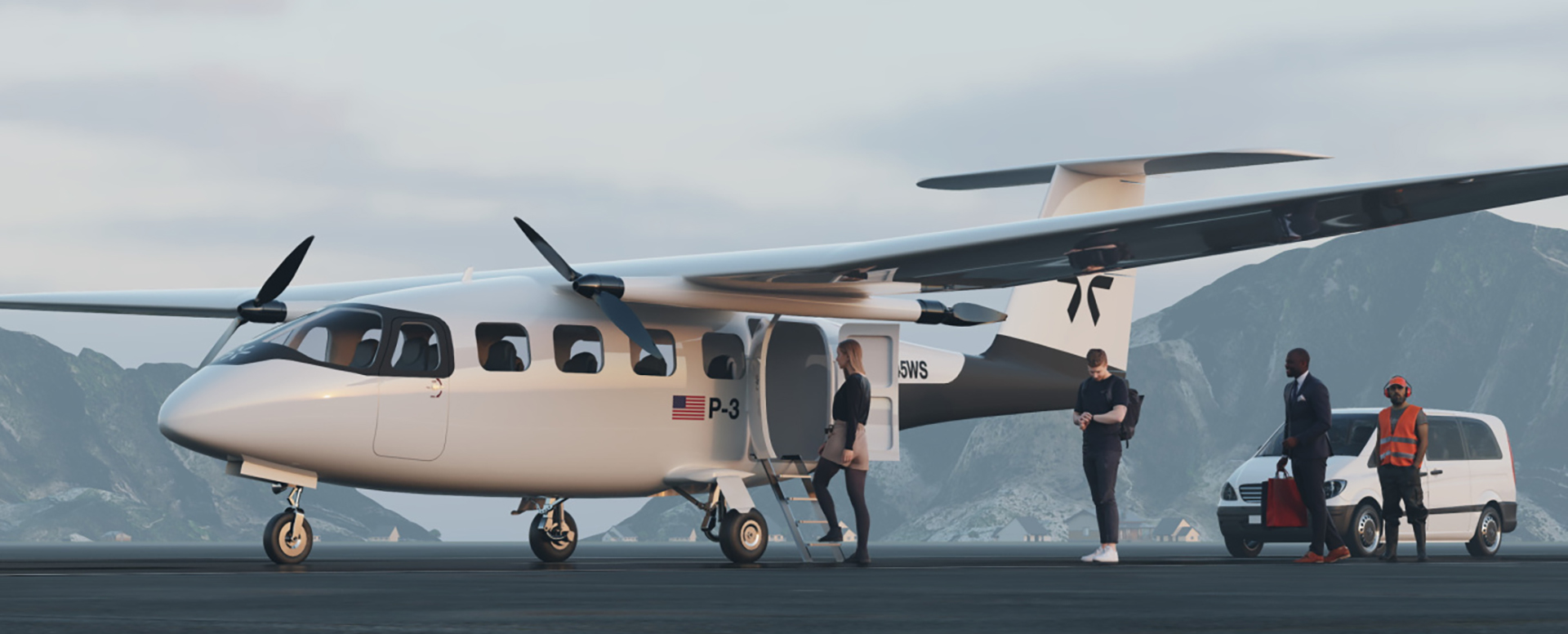Silicon Valley-based Pyka’s started out making an all electric, pilotless, crop duster which is gaining clients and proving itself highly efficient and adaptable amongst the economically critical South American agricultural sector. Having learnt valuable lessons and proven their patented technology works, they have announced the next step in the evolution of their product line.
Their newest aircraft will be an all electric, zero emissions, passenger plane, currently called the P3, a concept the company has been working on over recent years. The P3 utilizes the next generation of Pyka’s autonomous technology platform and have a range of 250 miles at a 180mph cruising speed.
“Electric and hydrogen propulsion technologies are playing an increasingly important role in the future of human mobility,” said Dan Grossman, the newly appointed President of Pyka.
“Pyka’s benchmark-setting electric propulsion systems, safety critical control software, advanced avionics, and custom composite airframes result from years of work in agriculture with our Pelican aircraft.”

In a managed and controlled launch, the P3 will commence flights in 2025 for same day and next day cargo transport. Cargo aircraft have an easier route to flight certification than commercial passenger planes, in part as there’s no evacuation criteria to pass & a myriad of other tests to pass.
Once the cargo variant is operational, Pyka plans to apply for FAA certification of a P3 as a piloted passenger transport, leveraging what it sees as a massive network of over 5,000 underutilized small airports in the U.S.
It’s pitch to customers is that the P3 can feed up to nine passengers from these small airfields to larger airports, where they can connect to the national and international national carrier flights. “It’s mostly places where driving 150 miles is unfeasible,” said founder and CEO Michael Norcia. “The amount of money people spend driving these regional routes, it’s a staggering amount — billions of dollars, and they’re not happy about it.”
“We’re starting clean sheet,” Norcia said, “but the approach to this aircraft was talking to customers and regulators and finding out what they want. The answer was resoundingly a nine-passenger plane.”
“(The P3 is) ideal for many regional routes that are already served by 50- to 100-seat jets, and the goal is to begin service with operators in “geographically constrained areas.”
The P3 will provide airlines with an all-electric vehicle designed to decarbonize local and regional trips and dramatically expand the reach of their operations. The company believes the aircraft should see a 5x reduction in direct operating costs compared with current models used by airlines.
“That’s a huge market opportunity,” added Norcia. “It’s really hard for airlines to serve smaller airports while maintaining a reasonable price… as the plane gets smaller, prices go way up.” He continued, the “P3 and electric make sense — the technology solves the cost and safety problems that have prevented small aircraft from becoming a meaningful part of our transportation system.”
In this environmentally focused world, the aircraft will bring sales and credibility advantages to carriers as it allows them to “decarbonize regional trips, while expanding the operations of airports catering to currently underserved communities.”
“We started the company because we think electric aviation will fundamentally change the way we move for the better,” said Norcia. “It’s unprecedented times for electric aircraft, but most are taking pre-orders for aircraft that may get certified some time in the next decade.”

Unique design
The plane has two propellers on each wing, one at the front and one at the back – a revolutionary design that has not been done before because of the complexities involved.
In small planes like the P3, the propellers must change pitch between take-off and cruising to operate effectively. That means tilting the moving blades which is no easy task to achieve, especially in-flight.
“In a normal aircraft, it makes sense to have this quite complex and heavy mechanism on your propeller in order to operate optimally over the whole range,” said Norcia. “Electric propulsion provides some opportunities to just massively simplify the aircraft. So all four of the propellers are fixed-pitch: the ones in front are pitched for take-off and climb out, and the rear ones are for cruising.”
Once airborne the front blades are aerodynamically folded and the rear blades take over for cruising.
P3 Fast Facts
- Half the price of similar electric planes in production to produce
- Designed from the ground up by a team with an already successful track record of certifying electric aircraft
- Production target in the next thirty months
- Unique, patented propulsion system that utilizes fixed pitch folding propellers in a pusher puller configuration.
For further information on the P3: https://flypyka.com/p3.html


0 Comments